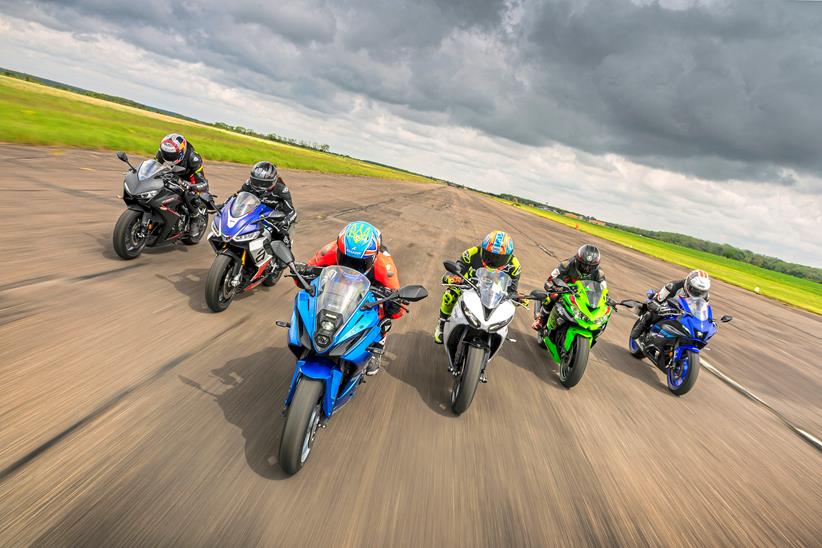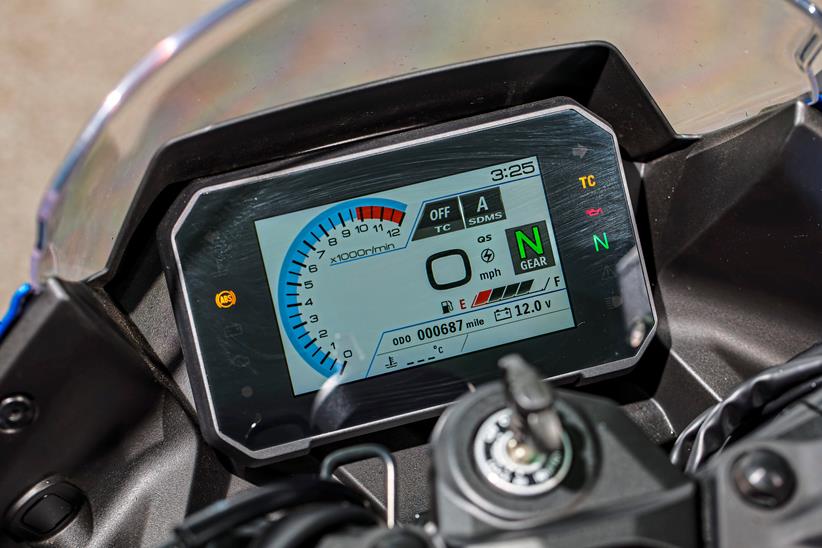The new middleweight sportsbike class is rammed with epic machinery but which one reigns supreme?
The notion of a thrilling middleweight sportsbike has changed drastically over the past 20 years. In the 2000s, sportiness and lap times trumped everything – meaning that engine capacity and design concepts between the models sat incredibly close. Because of that, what you could buy was set to a certain extent; you were stuck with an uncompromising and brutal machine no matter what badge was on the side of the tank, which is why sales fell off a cliff.
Now, not only has the supersport class evolved to encompass bikes of pretty much all shapes and sizes (literally, in this case) but a new segment has emerged: the softer, middleweight supersport.
Where once this class consisted of just a few offerings, the fact is, they always punched above their weight; last year, Honda’s CBR650R was the best-selling ‘supersport’ machine in Europe. And that’s why there are so many new models entering the class this year; Suzuki, Triumph and Kawasaki have all brought some new toys to the party, joining Yamaha, Honda and Aprilia.
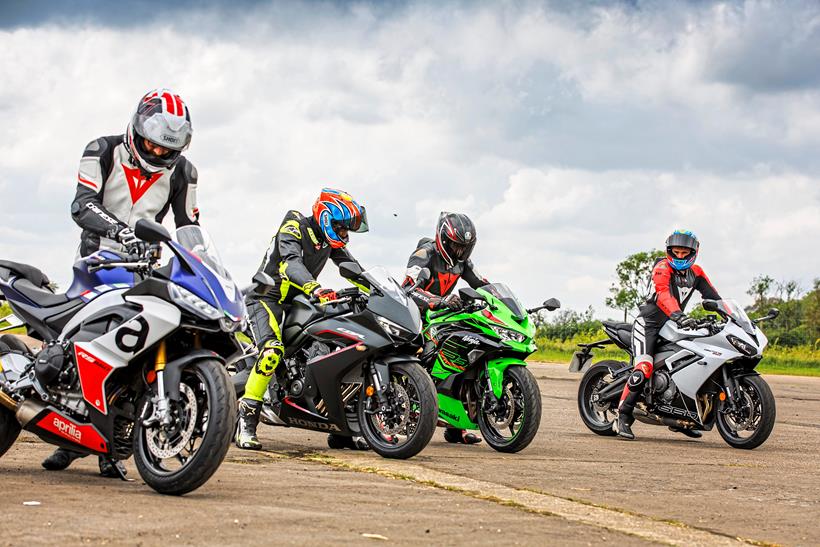
- In need of some new kit? Check out MCN’s list for best sportsbike kit here.
This is a new era of sportsbikes, and these machines have a few things in common, such as they’re all under 100bhp and they’re all under £10,000. But aside from that? There’s literally a flavour for everyone and each machine is very different – from the engine size and configurations, to the amount of tech and level of aggression in the riding position and geometry. In order to find the very best of the best, we conducted a mega test over three days, with a range of riders.
So, with a load of mileage on the roads of Blighty along with a day of speed testing where we could let them loose on an airfield, how do the new generation stack up?
You can watch Carl’s middleweight sportsbike video test here
Dive into the detail:
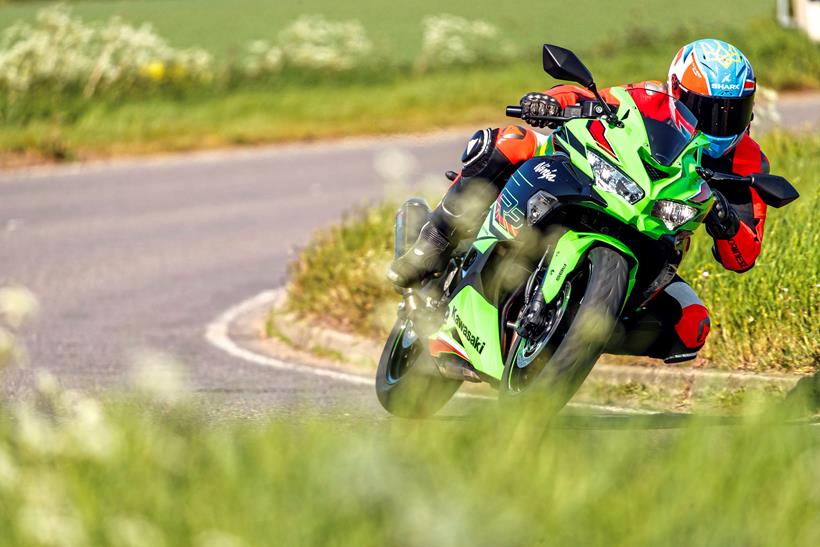
Kawasaki ZX-4RR
£8699
- Engine 399cc liquid-cooled 16v inline four
- Power 71.6bhp
- Torque 27.46lb.ft
- Fuel Capacity 15 litres
- Frame Tubular steel trellis
- Suspension F. Preload adjustable Showa 37mm USD forks R. fully adjustable monoshock
- Front brake 2x290mm discs with monoblock radial calipers and ABS
- Rear Brake 220mm disc with sinlge piston caliper and ABS
- Seat Height 800mm
- Kerb Weight 189kg (kerb)
- Check out MCN’s in-depth expert Kawasaki ZX-4RR review here
Performance data:
- 0-60mph 4.39s in 63.70m
- 0-100mph 10.96s in 305.87m
- 0-terminal 28.25s @ 129.79mph in 1225.80m
- Brake 70-0mph 3.62s in 53.37m
- Standing quarter mile 12.94s @ 107.49mph
- Roll on in top gear (40-80mph) 15.5s in 415.56m
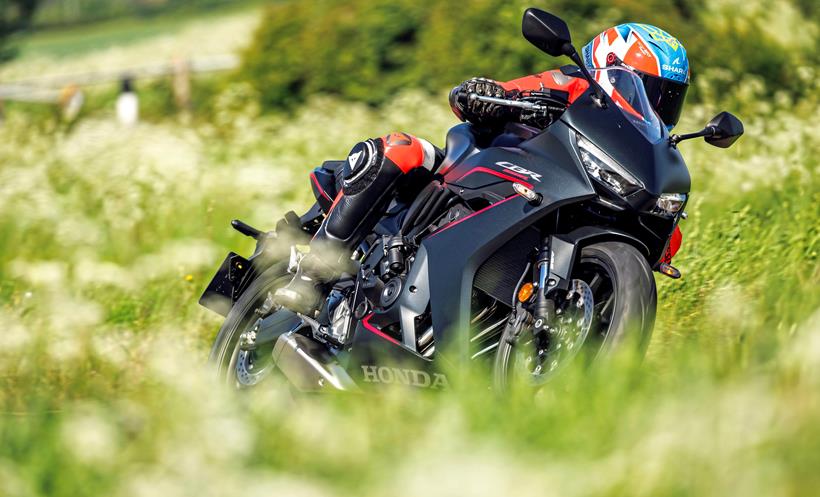
Honda CBR650R E-Clutch
£8699
- Engine 649cc liquid-cooled 16v inline four
- Power 87.5bhp
- Torque 45.5lb.ft
- Fuel Capacity 15.4 litres
- Frame Steel diamond
- Suspension F. non-adjustable 41mm Showa forks R. preload adjustable rear shock
- Front brake 2x 310mm discs with four piston calipers and ABS
- Rear Brake 240mm disc with single piston caliper and ABS
- Seat Height 810mm
- Kerb Weight 207kg (kerb)
- Check out MCN’s in-depth expert Honda CBR650 R E-Clutch review here
Performance data:
- 0-60mph 3.66s in 49.41m
- 0-100mph 8.30s in 221.03m
- 0-terminal 27.31s @ 136.92mph in 1294.50m
- Brake 70-0mph 4.01s in 59.50m
- Standing quarter mile 11.82s @ 117.21mph
- Roll on in top gear (40-80mph) 9.78s in 265.19m
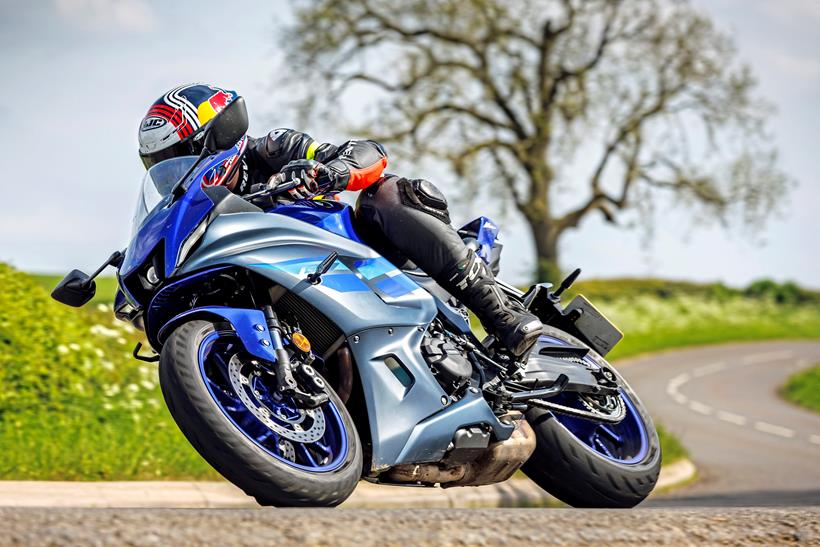
Yamaha R7
£8916
- Engine 689cc liquid-cooled parallel twin
- Power 70.87bhp
- Torque 48.57lb.ft
- Fuel Capacity 13 litres
- Frame Tubular steel diamond
- Suspension F. fully adjustable 41mm KYB forks R. with preload and adjustable monoshock
- Front brake 2x298mm discs with four-piston radial caliper and ABS
- Rear Brake 245mm disc with single piston caliper and ABS
- Seat Height 835mm
- Kerb Weight 188kg (kerb)
- Check out MCN’s in-depth expert Yamaha R7 review here
Performance data:
- 0-60mph 4.21s in 57.22m
- 0-100mph 9.75s in 262.88m
- 0-terminal 35.91s @ 132.72mph in 1695.55m
- Brake 70-0mph 3.77s in 55.86m
- Standing quarter mile 12.73s @ 111.3mph
- Roll on in top gear (40-80mph) 8.64s in 235.85m
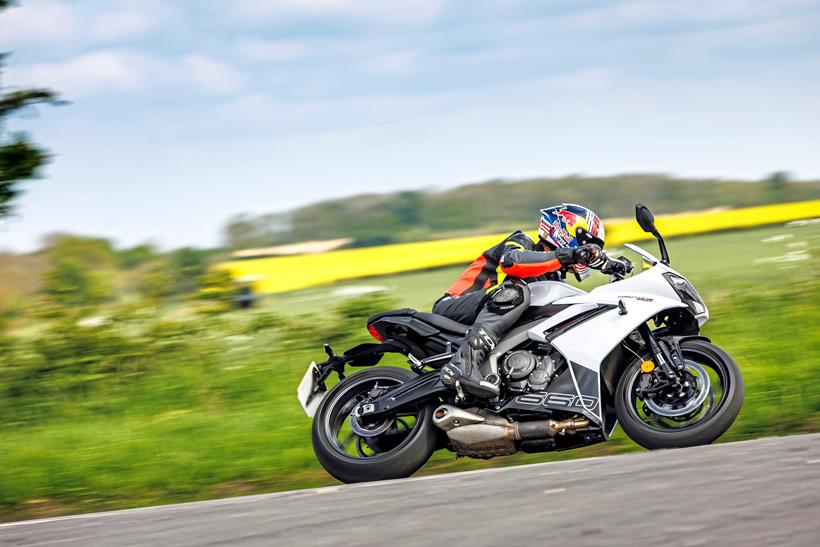
Triumph Daytona 660
£8595
- Engine 660cc liquid-cooled inline tripple
- Power 88.8bhp
- Torque 47.5lb.ft
- Fuel Capacity 14 litres
- Frame Tubular steel
- Suspension F. non-adjustable 41mm Showa SFF-BP forks R. preload adjustable monoshock
- Front brake 2x310mm discs with four-piston radial calipers and ABS
- Rear Brake 220mm disc with single piston caliper and ABS
- Seat Height 810mm
- Kerb Weight 201kg (kerb)
- Check out MCN’s in-depth expert Triumph Daytona 660 review here
Performance data
- 0-60mph 3.43s in 47.98m
- 0-100mph 7.83s in 210.67m
- 0-terminal 26.79s @ 133.02mph in 1267.78m
- Brake 70-0mph 3.78s in 55.71m
- Standing quarter mile 11.56s @ 117.54mph
- Roll on in top gear (40-80mph) 5.68s in 153.78m
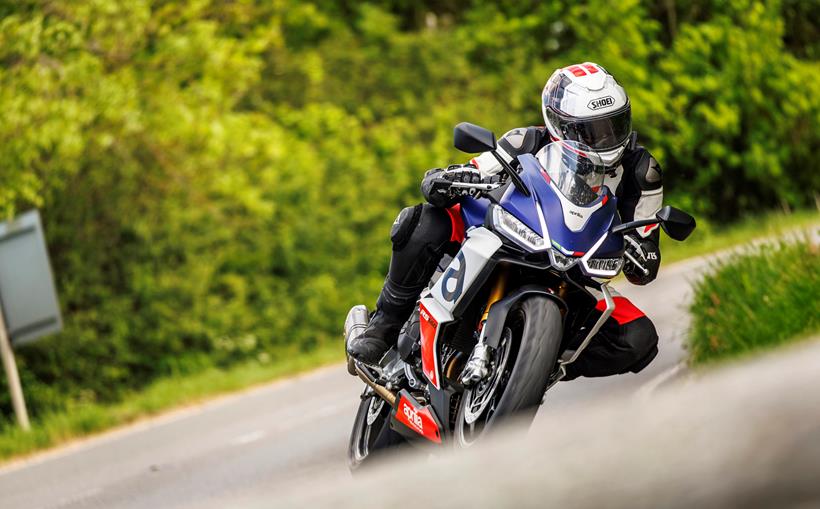
Aprilia RS660
£9550
- Engine 659cc liquid-cooled parallel twin
- Power 90.76bhp
- Torque 47.75lb.ft
- Fuel Capacity 15 litres
- Frame Aluminium twin spar
- Suspension F. 41mm adjustable KYB forks R. adjustable monoshock
- Front brake 2x320mm discs with Brembo four-piston caliper and cornering ABS
- Rear Brake 220mm rear disc with twin piston caliper and cornering ABS
- Seat Height 820mm
- Kerb Weight 183kg (kerb)
- Check out MCN’s in-depth expert Aprilia RS660 review here
Performance data:
- 0-60mph 3.94s in 52.55m
- 0-100mph 8.10s in 206.12m
- 0-terminal 27.27s @ 139.99mph in 1273.78m
- Brake 70-0mph 3.65s in 53.72m
- Standing quarter mile 12.25s @ 117.39mph
- Roll on in top gear (40-80mph) 8.65s in 234.14m
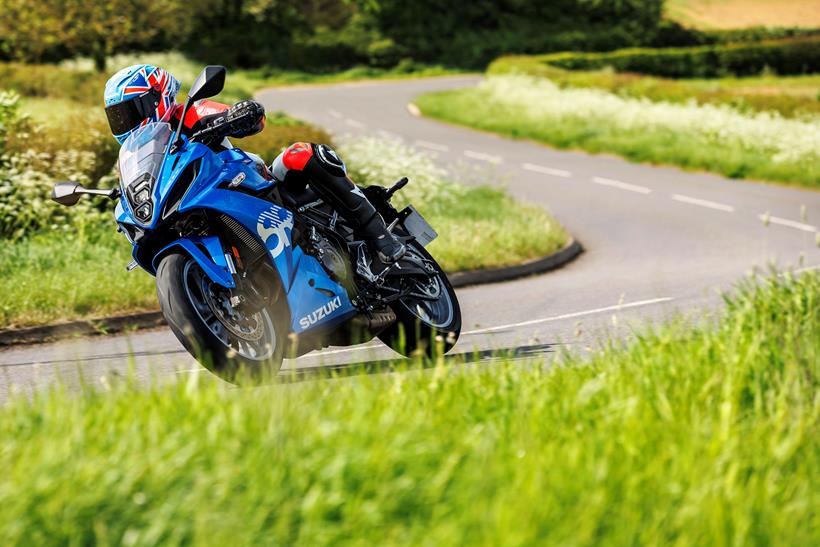
Suzuki GSX-8R
£8899
- Engine 776cc liquid-cooled parallel twin
- Power 75.5bhp
- Torque 54.3lb.ft
- Fuel Capacity 14 litres
- Frame Tubular steel
- Suspension F. non-adjusable Showa SFF-BP forks R. preload adjustable monoshock
- Front brake 2x310mm discs with four-piston radial Nissin calipers and ABS
- Rear Brake 240mm disc with single piston caliper and ABS
- Seat Height 810mm
- Kerb Weight 205kg (kerb)
- Check out MCN’s in-depth expert Suzuki GSX-8R review here
Performance data:
- 0-60mph 3.64s in 51.79m
- 0-100mph 8.97s in 249.62m
- 0-terminal 27.79s @ 131.25mph in 1261.52m
- Brake 70-0mph 3.93s in 56.44m
- Standing quarter mile 12.14s @ 111.41mph
- Roll on in top gear (40-80mph) 6.79s in 183.64m
See and hear the bikes being tested by the MCN team:
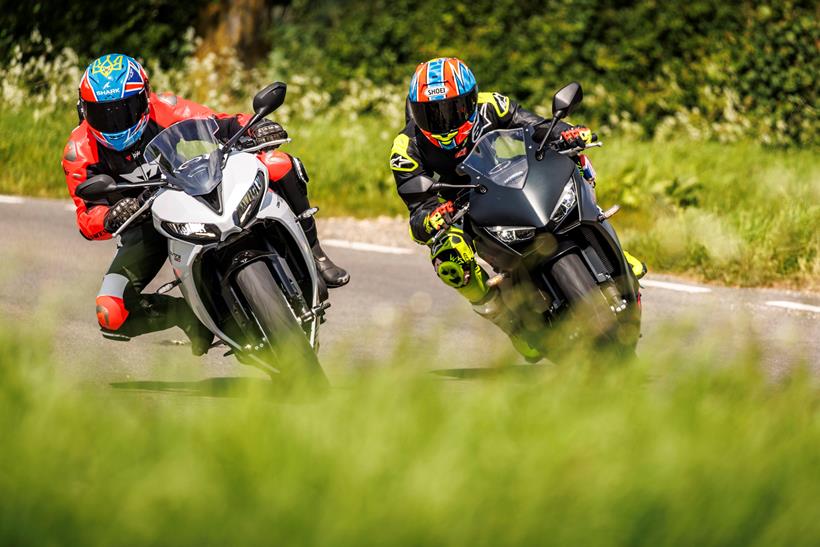
Honda CBR650R E-Clutch
Honda’s CBR650R has been an impressive seller since its release, and for good reason. It’s a classy all-rounder that’s roomy and comfortable, almost more akin to a sports-tourer than a supersport machine. And that’s the CBR650R’s DNA.
It offers a pleasant and comfortable experience, with a roomy riding position and decent ride quality – making it a smart choice for larger riders who prefer life in the chilled-out lane. But because of the CBR’s impeccable manners it’s actually quite a forgettable experience, especially in this company – which is exactly why the Honda’s key was the one that each tester went for last.
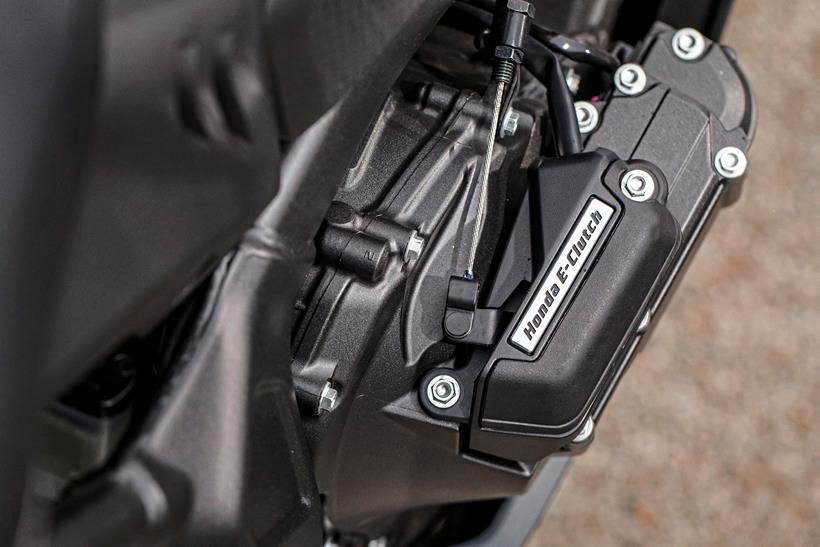
Although there have been some small tweaks to the engine for 2024 it’s much the same as before, with the chunky inline-four unit offering a reasonable amount of midrange torque, although still being happiest above the 10,000rpm mark. It’s a fast motor at its core that is impressively quick on our runway, yet it does it all without a huge amount of character or soul, just going about its business in a calm and collected manner.
It’s much the same in terms of its handling capabilities – offering a planted and predictable, no-frills experience that is sports-tourer-esque in its nature, which is down to the soft set-up from the chassis and suspension, combined with a neutral riding position and a hefty weight figure.
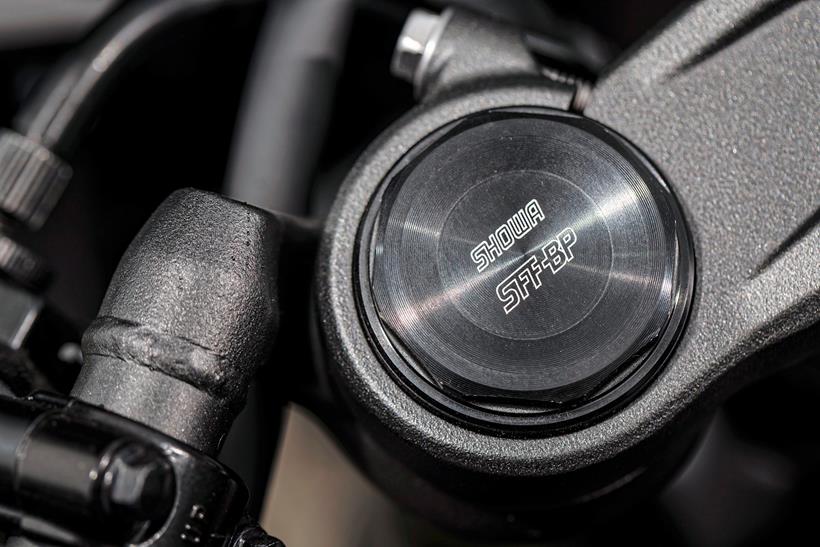
- Related: Keep it shiny, get the best motorcycle cleaning products here
And, of course, there’s the E-Clutch system too. In reality, it doesn’t really add much to the riding experience unless the traffic is heavy, and even so, it’s still quite sharp at single-digit speeds on the initial throttle pick-up, which means that using the conventional clutch is easier for the more experienced rider.
Although it’s cracking value at just £100 extra over the standard model, the fact there are other machines that come with an up/down quickshifter as standard (cough, Suzuki) that aren’t actually that much more expensive means that the Honda just misses out in such high class company, regardless of how well-mannered it may be.
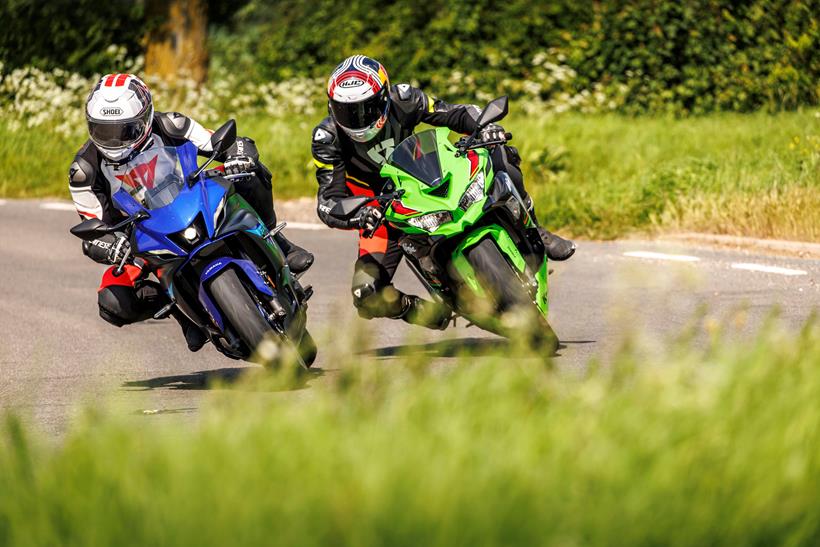
Yamaha R7
Which is the exact opposite of where the R7 sits on the spectrum. The Yamaha may be getting on a little in terms of age, but it still brings something to the sportsbike sector that nothing else can – and that is a true, old-school supersport style in terms of its aggressive riding position and geometry.
For some riders that is an absolute clincher and a reason that the R7 has sold so impressively since its debut, but for others, it may seem a bit too hardcore.
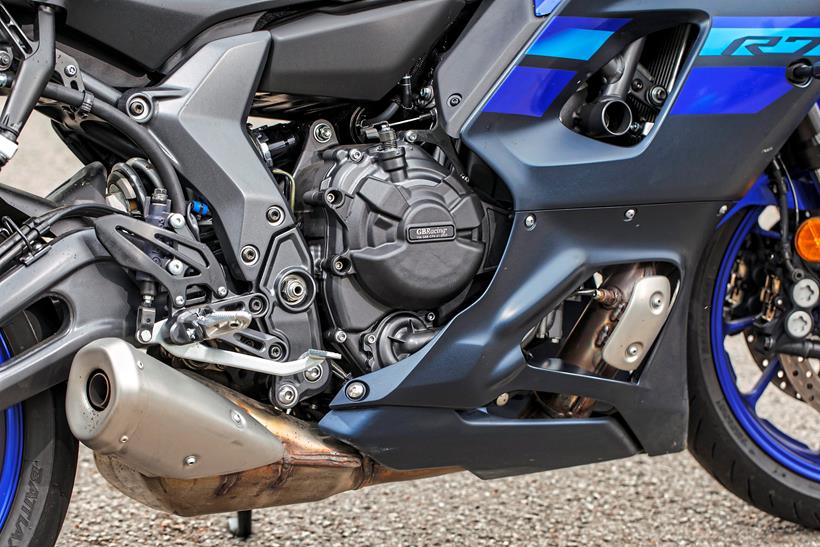
That’s because the riding triangle is up and on the wrists which, when combined with the R7’s aggressive set-up, makes for an absolute cornering beast when you are pushing hard – especially over smoother sections of tarmac.
Of the whole bunch, the Yamaha is without a doubt the most ‘racebike’ in terms of its chassis but that also means that it’s uncompromising to say the least, whether that be in terms of comfort for a motorway jaunt, or even its more rigid nature when tackling bumpy sections. If you’re in this class and looking for the sportiest and least compromised of set-ups, then the R7 is the bike for you.
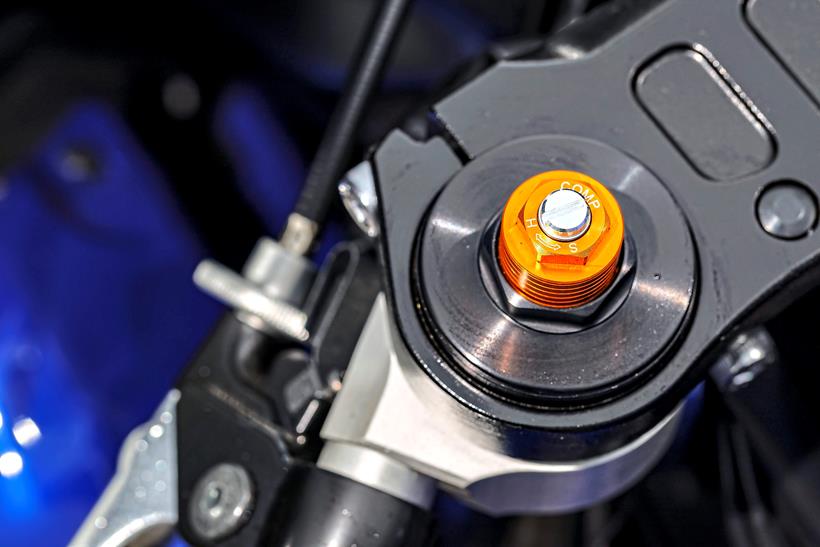
That said, compared to its rivals, the R7 is lacking in the engine and the electronics department. The 689cc CP2 motor is still a blast in its feisty delivery of torque, but it does feel underpowered and lacking some top-end stomp. It’s just not that spicy or exciting compared to some of the stronger engines in this sector.
Then there’s the lack of gadgets; the dash is still an LCD unit and the only riding aid on offer comes in the form of basic ABS, which is frankly not enough when the cost of the R7 is comparable to the rest of the field. The R7 doesn’t just look like a race bike with its sharp fairings but it feels like one, too; it is a bit too focused and could do with an update both to the motor, and to the electronics.
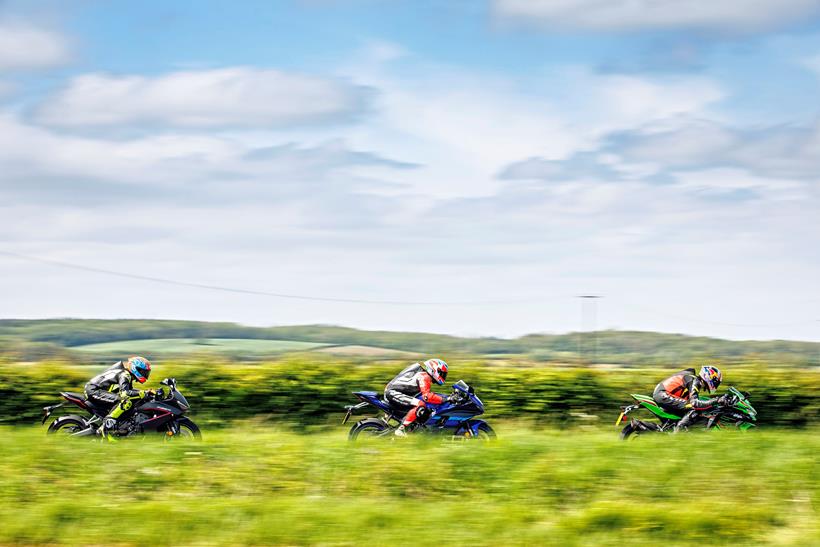
Kawasaki ZX-4RR
The engine is exactly what makes Kawasaki’s ‘little’ ZX-4RR shine so brightly, offering a sense of sheer enjoyment and fun that sets it apart from its bigger-capacity rivals. If you’re wondering why the 399cc inline four has earned its place in this test over its bigger, but less refined parallel-twin brother in the Ninja 650, it’s because it punches well above its capacity, thanks to just how exciting the engine is.
It brings an old-style flair to the sub-100hp class thanks to an absolutely rip-roaring 16,000rpm redline, complemented by a gorgeous soundtrack.
The trouble is, the little 400 does deliver a little more bark than bite, which means that although the sense of speed is quite high, when going up against its larger-capacity rivals it doesn’t have the minerals to truly keep up. Plus, there is very little torque on tap and, below 8000rpm, the Kawasaki feels like it’s almost dropped into some sort of wet or limp mode, which means that it really punishes being a gear too high.
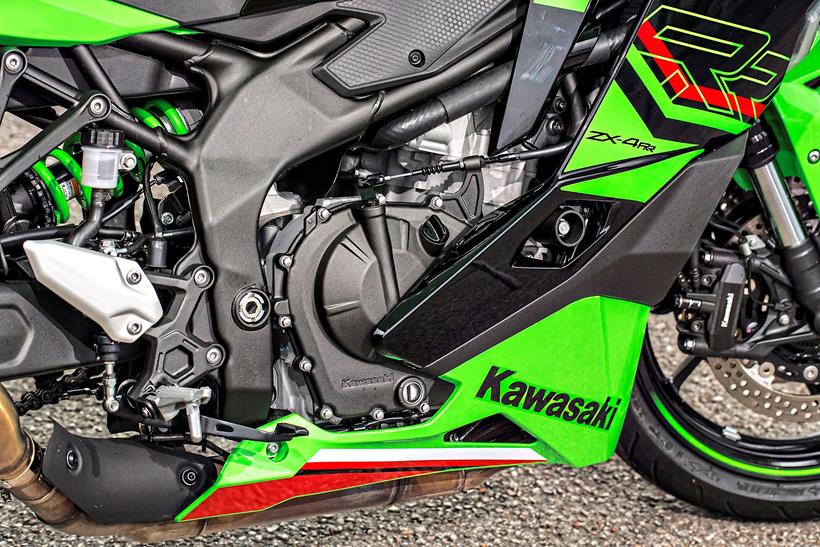
Another thing to note is the riding position and sheer size of the ZX-4RR, as not only does it have the lowest seat height of the bunch but the bike is also the most compact, especially in terms of the space between the cockpit, handlebars and footpegs.
For a smaller rider this is an absolute blessing, but anyone who towers above the six foot mark should be aware that it’s not the most spacious machine out there (although the riding position sits nicely between being neutral and aggressive).
‘They’re all under 100bhp, and they’re all under £10,000’
The same feeling goes for the ZX-4RR’s handling credentials, as it’s light on its feet, flickable and has a good amount of feel on the front end which makes it easy to rail into a corner, although it doesn’t quite match the stability on offer from some of its rivals. It handles well, is easy to ride and has a motor that is exciting, although it doesn’t quite have enough of each to sit further up the rankings.
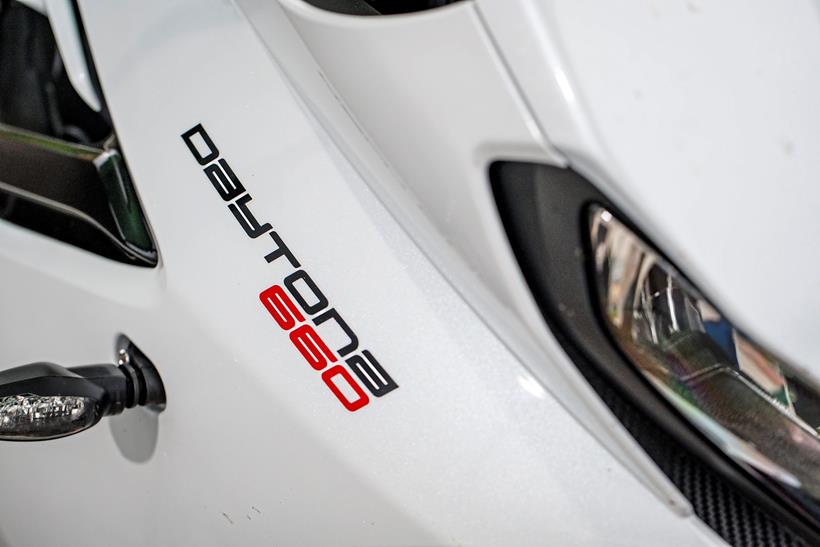
Triumph Daytona 660
When Triumph pulled the covers of their Daytona 660 we all expected seriously big things, but in reality it is a machine of two halves. On the one hand, it’s one of the best bikes in the class thanks to its sublime, 660cc triple. Being the only triple in the class (at the moment) it does feel energetic in its delivery of power, with a responsive throttle and a peaky, exciting motor. For road riding it feels fast as it sings its way to the very top of the revs, accompanied by a glorious soundtrack through the reworked exhaust.
It has the essence of a proper, supersport engine, with an ample amount of power to have fun with – yet even at a steady pace, it’s a peach. It’s fine sitting at slower speeds thanks to the chunk of torque on offer from 3000rpm, and it will happily sit at 70mph in top gear without feeling too buzzy.
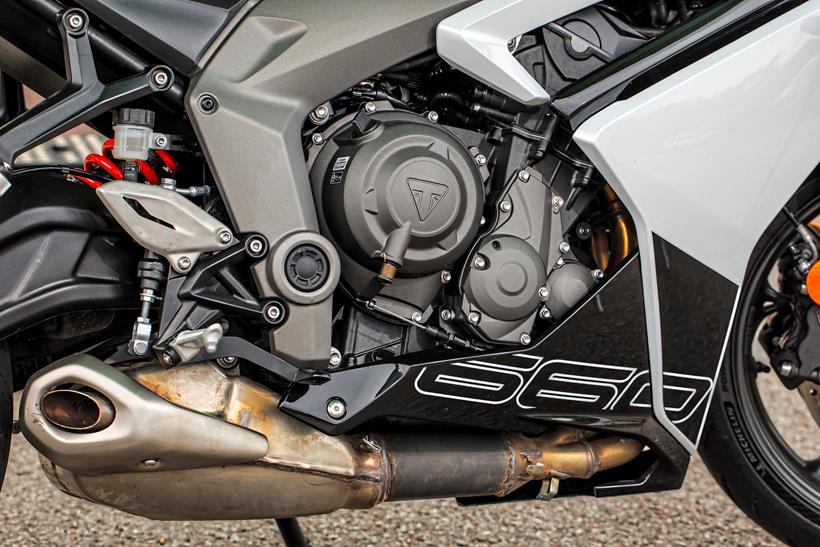
To top it all off? Triumph claim that it’s the fastest in class – and they weren’t lying, as it pipped everything else on the runway. It’s a stunning piece of engineering. But, and this is a monumental but, its handling capabilities just don’t live up to the high standards that Triumph have set themselves over recent years, which is frustrating – especially considering how good that motor is.
The weight bias feels too neutral and soft at the rear, which means that when you are on the way into and mid-corner, there isn’t a great deal of feel through the suspension, which is also very soft in its non-adjustable set-up.
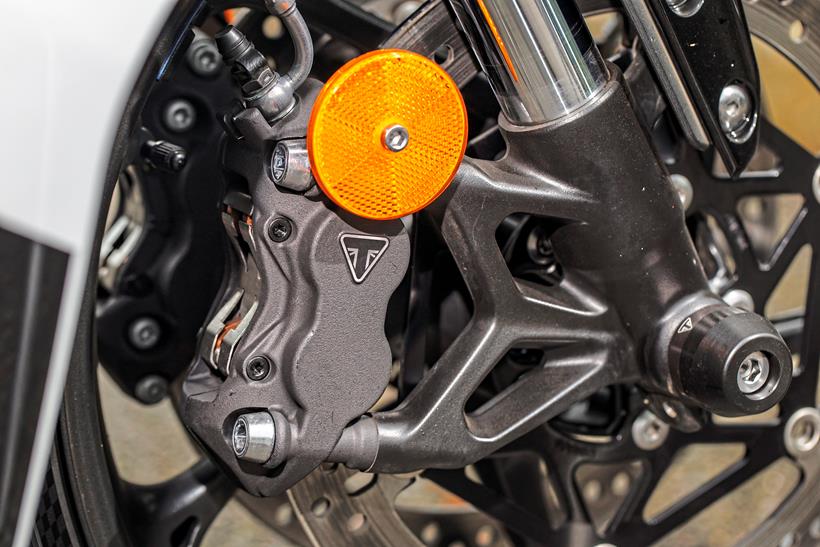
Not only does it make the Daytona 660 difficult to push to its limits, but it also makes it feel lethargic and harder to change direction, actually sitting close to the bottom of the pile where handling is concerned. It feels like a missed opportunity as the brakes are impressively strong and although the dash and the electronics are minimal; everything else works well, but as a sportsbike the Daytona 660, compared to its rivals, just doesn’t deliver enough in its standard form.
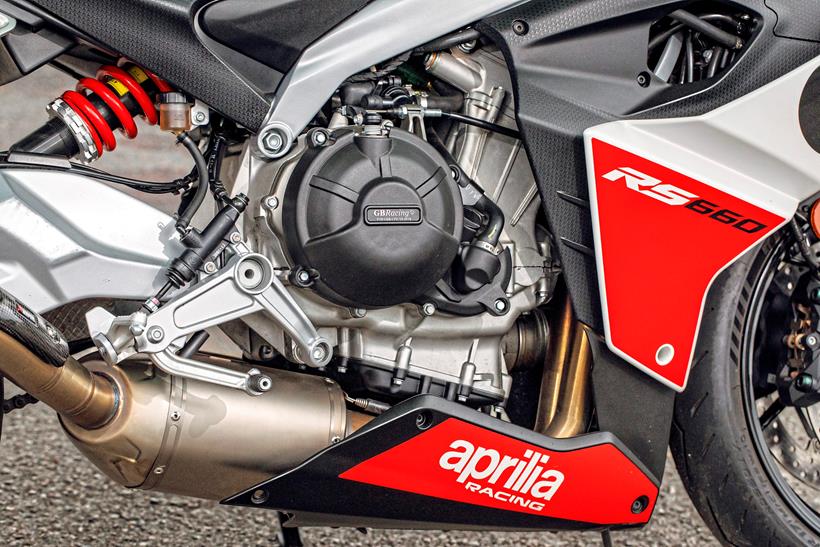
Aprilia RS 660
The RS 660 was an MCN award winner in 2021 for good reason, and it very nearly retained its crown as the king of the sportsbike class. It’s a pleasure to ride thanks not only to its feisty and perky motor, but also due to the fact that it feels like a mini RSV4 in the corners.
Because it essentially uses the front half of Aprilia’s V4 motor, the 659cc unit not only sounds exceptional for a parallel twin but goes well too, pulling with a decent level of ferocity from 4000rpm onwards, which makes the RS 660 feel fast, fruity and exciting.
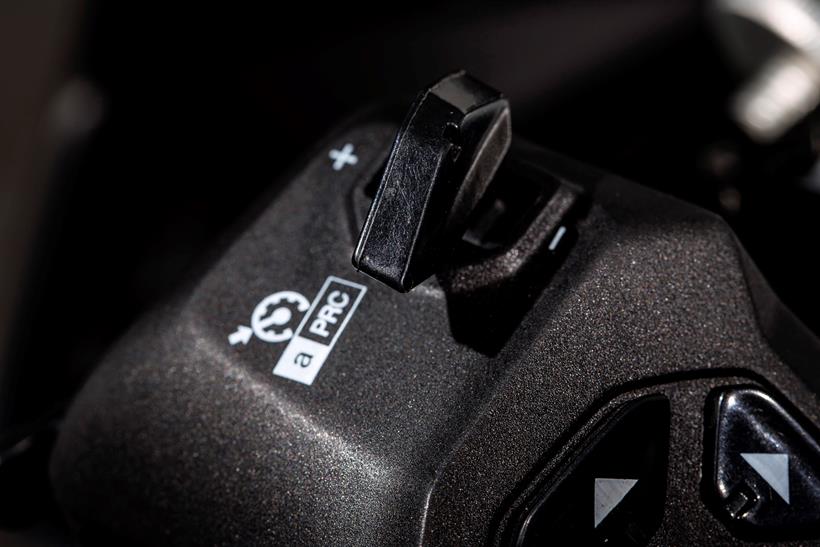
This is carried into its cornering, as the Aprilia is on the more aggressive end of the spectrum in terms of both its riding position and its chassis and suspension, which rewards faster riding, and offers a decent level of feedback along the way. Sure, it’s a slight step down from the R7 in terms of its brutal riding position, but it’s still very much a sportsbike at heart, which is a good thing for the most part.
On the subject of which, if pub bragging rights are important then the RS 660 is the most powerful of the lot and packs the most tech, with a full suite of electronics that have been lifted from the mighty RSV4 platform. You get a TFT dash, six-axis IMU, cornering ABS, traction control, even cruise control; although there are a few bits that may seem a little excessive (I’m looking at you, wheelie control) it’s great to have this onboard, as it truly does feel premium.
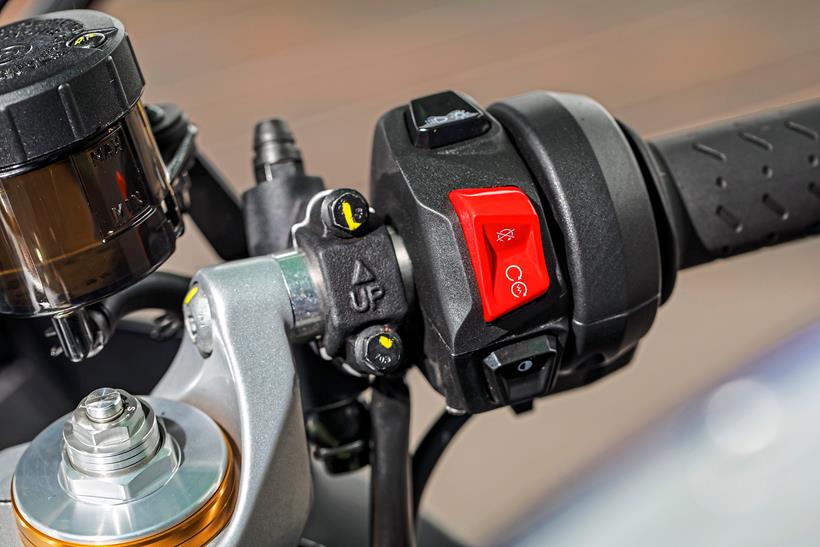
But the Aprilia loses out due to its sporty focus (had this been a track test there’s every chance that it would’ve come out on top). The riding position is more aggressive than the likes of the Suzuki and the Triumph, which makes it a little harder on the wrists, while although the suspension and chassis set-up is effective, it’s not the plushest road bike ride on offer. It is the most expensive here, but that is justified when the specs and equipment are taken into account.
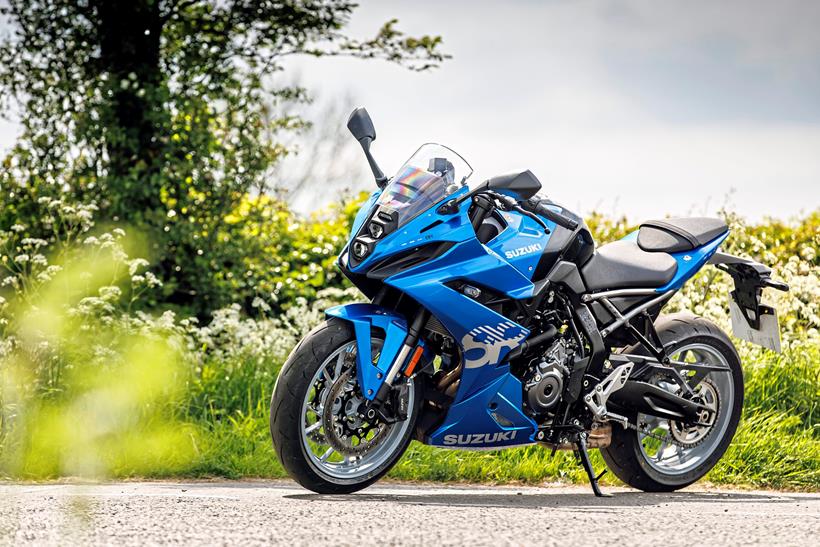
Suzuki GSX-8R
At a first glance the GSX-8R doesn’t look like anything particularly special, considering how little has been changed from the naked GSX-8S with which the 8R shares so much of its componentry. But don’t let that fool you. Sure, the likes of Yamaha and Triumph have gone to town in changing far more in their platforming, yet even so the Suzuki comes out on top as the best, all-round sportsbike for the road.
If you ignore the horrible layout of the ’bar risers, the GSX-8R is a surprisingly striking looking machine, but the best thing about it is how wide the operating window is.
‘As a do it all, the GSX-8R is sublime’
The riding position offers an engaging and sporty enough experience without being offensive to the back and wrists, and even though the seat height is nice and low at 810mm, there’s enough space in the cockpit to accommodate every size and shape of rider. It’s comfortable, and easily manages motorway mileage with a decent level of wind protection.

But the beauty of the ’8R is just how effective it is as a sportsbike, just as happy being ridden hard as it is pottering about at town speeds.
The suspension not only offers an impressive amount of feedback and feel, but has been dialled in well for UK roads as there’s enough support to cope with hard braking and acceleration. Yet it works without being too aggressive, offering a plush ride quality that you’d usually expect from a sports-tourer – those pogos are the very best of both worlds.
Then there’s the stability; the Suzuki excels mid-corner at lean, because it is so sure-footed and confidence inspiring, no matter what the road surface is. It is the easiest machine out of the bunch to master and ride fast, and by some distance.
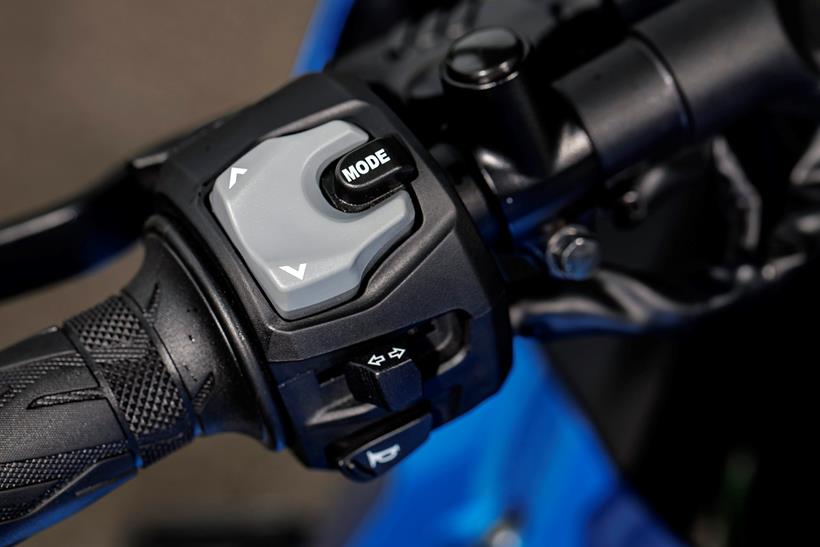
And then there’s its 776cc parallel twin. The engine is impressively usable and forgiving with a meaty midrange and the ability to be lazy with the gearbox (which comes with a slick enough quickshifter and autoblipper as standard).
Even though it remains unchanged in every respect, it’s very user-friendly with just enough power to have fun with, especially down tight and twisty back roads.
Verdict: ‘Suzuki have it covered’
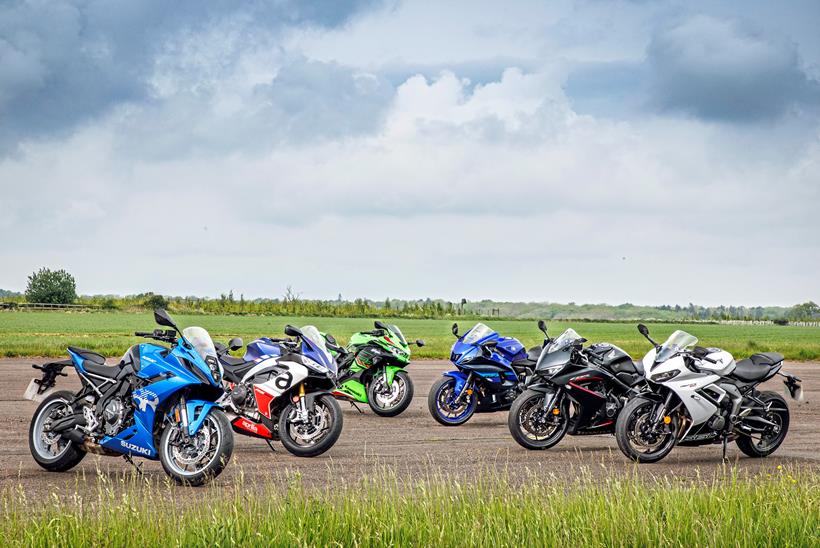
The new sportsbike class is absolutely booming. If you want something big, comfortable and easy, Honda’s CBR650R is still a strong package. Yet it’s just a bit too sensible, which can’t be said about Yamaha’s exciting and aggressive R7.
Then there’s the ZX-4RR, which brings a sky-high redline to the party for good measure, while Triumph’s Daytona 660 offers an exceptional motor in a soft and less sporty package. And we haven’t even got the top two.
It may be getting on a little now, but Aprilia’s RS 660 is still a special machine, offering the most in terms of performance, tech and for sports fans, a bit of Italian desirability. But as far as a complete package goes, one that encompasses comfort, performance, handling, electronics and of course the price, it’s Suzuki’s GSX-8R that comes out on top. It’s so easy to ride fast, comfortable to ride slow and where other bikes excel in certain areas, the Suzuki hits the sweet spot across all bases. For the roads, it truly is a sportsbike at heart, mixed in with a dash of comfort.
Likes:
- Softer riding position
- Four-figure prices
- Sheer amount of choice
Dislikes:
- Lack of a premium option
- Lack of aggression
- Outright speed
While you’re here: How MCN tests bikes
Our highly experienced team of road testers grind out hundreds of miles, come rain or snow, on the UK’s pothole-ridden roads to decide which bike is best in a particular category.
Using years of riding and racing experience (on and off-road), our expert journalists are able to assess the capabilities of a machine and translate that into understandable language to help MCN’s readers make an informed buying decision. Pitching bikes against their main rivals, we aim to give a conclusive verdict on which bike is best for your needs and your budget.
Using their considerable knowledge of the motorcycling market and audience, they can put a motorcycle into context and deliver a verdict that means something to anyone considering buying a particular machine, whether it be a cutting-edge, 200bhp sportsbike, a tall adventure weapon or a low-capacity 125cc machine.
